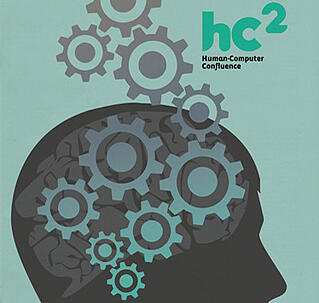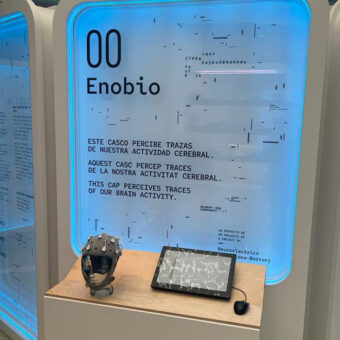Two weeks ago we (through HC2) sponsored a TEDxBarcelona event on the future of society and technology. The topic was inspired by an area of research that we coordinate for the Europeans Commission’s Future and Emerging Technology group called Human Computer Confluence. In its most simple form HCC is the study of the symbiosis of humans and computers where terms like “interface” become redundant. It’s extremely multidisciplinary and lives at the intersection of Human Computer Interaction, Virtual & Augmented Reality, Pervasive Computing, Cognitive Neuroscience, Presence and Psychology.
A simple, practical example might be a smart building that adjusts lighting and heating based on the behaviour and preferences of the occupants. This system has no interface and the human does not consciously interact with the computer, instead the two are intimately linked. When you start to think about where this might lead it goes beyond the usability, user-friendliness and robustness of the software and starts to move towards the behaviour of symbiotic systems. If you imagine our smart building trying to make several, then many people happy simultaneously we can see that complex behaviour might emerge.
When you scale this to level of cities, and we can see the beginnings of this happening in Smart-Cities, you need to think about the social science and potential impact of pervasive technologies driving background systems based on human behaviour.
Another example is that of remote avatars where the user is cognitively embodied in a remote physical or virtual avatar as in our BEAMING project. Here the interface also disappears as the user simply behaves as if they were, in fact, at the remote location. It gets interesting when you realise that you could have a single user embodied in several avatars in different locations at once with attention directed as needed and autonomous “proxies” kicking in when not. Another way it gets interesting is to play with size and perhaps even form of the remote avatar, your robotic avatar might be as small as a rat and the user may or may not be aware of this transformation. This raises questions of “self” with philosophical and psychological elements that need to be considered.
One area we are very interested in is affective computing where we use brain computer interfaces based on our Enobio platform and other sensors including cameras to infer the emotional state of the user, this opens up possibilities for smart systems that adjust their behaviour in real time based on how a user reacts to those changes. Again the interface disappears. Here the issues that are raised are ethical, regarding privacy, transparency and so on.
Many researchers in the field of HCC are now thinking about these aspects and this is why we decided on the theme: The future of society and technology. The speakers included technologists and scientists but also ethicists, artists and philosophers as we incorporate these disciplines into the research rather than evaluating impact after the fact.
This is, as it should be, becoming standard practice and an essential element in design for HCC systems.
Other groups and communities such as Social-IST, Onlife and SINTELNET are also looking at these issues very closely as these technologies move into the wild and point the way for the integration of the social sciences in what we call co-designed systems.
In the future each of us will likely be fundamentally, and formally, part of these HCC systems, driving algorithm evolution as we go about our lives.


